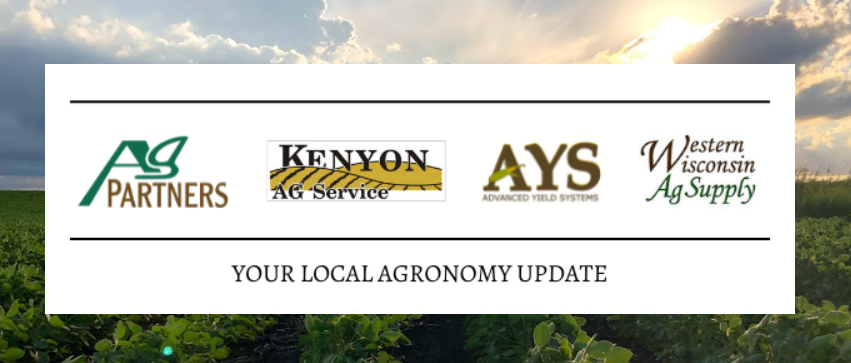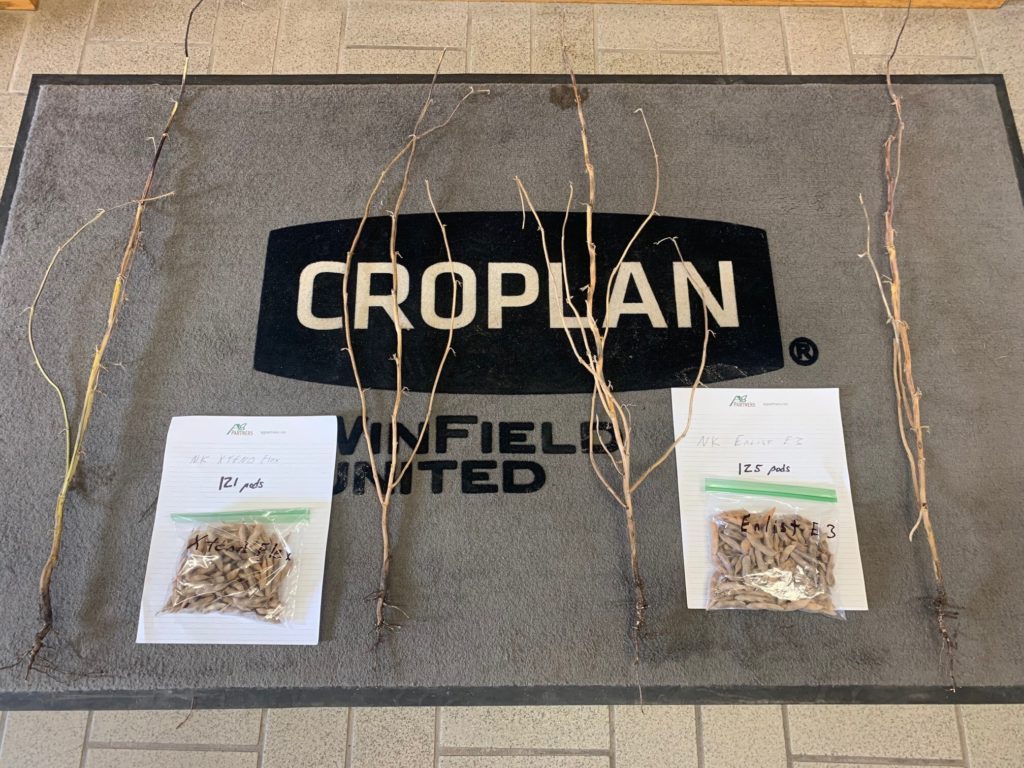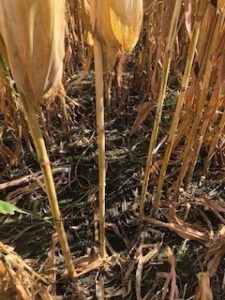The one-stop-shop to hearing everything you need to know this week about what is happening in your fields.
This week’s featured agronomists are:
Tim Malterer – Le Sueur
Chad Mattes – Le Sueur
Chris Soltau – Goodhue
Joe Dee – Morristown
Matt Kimm – Stewartville
Luke Daninger – Ellsworth
Scroll down to hear from your local agronomist.
AYS
Your Advanced Yield Systems Weekly Spotlight:

Tim Malterer
West
Belle Plaine – LeCenter – LeSueur
|
Chad Mattes |
Today I just wanted to do a quick follow up from my summer Xtend/E3 trait platform comparison since bean harvest is in full swing. We can discuss or debate which system is better on Giant Rags or Waterhemp, which bean has the better disease package against SDS or SWM, or which system is easier to work with- but at the end of the day it’s all about YIELD POTENTIAL. |
We have all been anxiously waiting to see yield results and so far they are way better than expected. Less rain means less yield right? This year seems to be an anomaly, as many of you have been seeing 60-80 bushel averages. Unfortunately, at this point we do not have any real side by side data but that will come later this fall from our AYS system, Answer Plot data, and companies like NK who offer both trait platforms. So stay tuned for that.
Last week I popped into the Le Sueur Answer Plot and took the photos below. As you can see both varieties seem to have a similar plant structure and most importantly, similar yield potential.
Pictured Above:
LEFT: NK17-M2XF (XtendFlex) vs RIGHT: NK18-J7E3 (Enlist)
Pictured Below:
LEFT: XtendFlex with 121 pods vs RIGHT: E3 with 125 pods
We are not far off from being able to start analyzing side by side data, which will help you make the best agronomic and economic decision for your farm for 2022. As always, please reach out to your local Ag Partners agronomist with any questions you might have around soybean traits. Have a safe harvest!
East
Pine Island – Cannon Falls -Goodhue -Lake City
|
Chris Soltau |
After an early start on harvesting corn silage and soybeans, it is time to prioritize a corn harvest schedule. Below are 2 pictures- the one on the left depicting a healthy corn field and the picture on the right depicting a diseased field. Notice the green and red of the stalks in the healthy field. The green is an indication of the healthy stalks and the red comes from an accumulation of sugars in the plant when the cob stops filling grain. Compare that to the diseased field, where the stalks are tan with black lesions on them- indicating anthracnose stalk rot. These stalks are more vulnerable to lodging and breaking. |
|
Healthy Corn at 22% Moisture
|
Diseased Corn at 22% Moisture |
Typically, high fertility fields in a crop rotation are the healthiest. Fungicide is also a great place to look for healthier stalks. It is also possible that a hybrid on one field may be healthy and that same hybrid on another field may be vulnerable to lodging.
Where I would recommend looking first – Corn on corn with lighter soils, no fungicide, suffered from stress early, or fields that had hail. After that, I would look at the hybrid ratings for anthracnose, stalks, and root strength. A quick and easy eye test can be verified by bending the stalk to the rows along side of it. If the stalk breaks, that is a high priority to harvest soon.
Central
Owatonna – Morristown – Wanamingo – Kenyon
|
Joe Dee |
Join Joe Dee, Morristown Agronomist, for a harvest update. |
South
Elgin – Lewiston – Stewartville
|
Matt Kimm |
We are off and rolling! With the end of bean harvest rapidly approaching, we should waste no time in getting after the corn acres as soon as possible. With drier conditions this summer and heavier than normal disease pressure in areas, we do not want to run the risk of letting the crop sit for too long, When this happens, stalk quality concerns start to limit yields. Prelim yields sound very good and much better than expected. Moistures are already in that 17-22 percent range in a lot of cases. Contact your Ag Partners Agronomist and have a conversation abut what hybrids and fields you may want to be targeting first. Have a safe fall everyone. |
WWAS
Ellsworth
|
Luke Daninger |
Soybeans are coming off at a rapid pace throughout the region. Yields seem like they are anywhere between 40-70 bu/acre. The later season beans were really able to utilize the moisture that came in August, as the beans are rather large. On the corn side, fields are starting to be poked into here and there. Moisture seems to be ranging primarily from 20-25% on what is ready to be picked right now. Yields have a large range from 160-240 bu/ac field averages. It appears that fields with a healthy fertility bank are paying dividends. |
We are in prime time to fall evaluate alfalfa stands so we have a plan going into next year. Overall, stands look good right now and it is just a matter of fields aging out. Reach out to your agronomist if you would like your fields looked at yet this fall. Below are some visuals to help with crown assessments on the alfalfa. If the majority of the plants score 2 or less, the stand should be good to keep for the following season.














